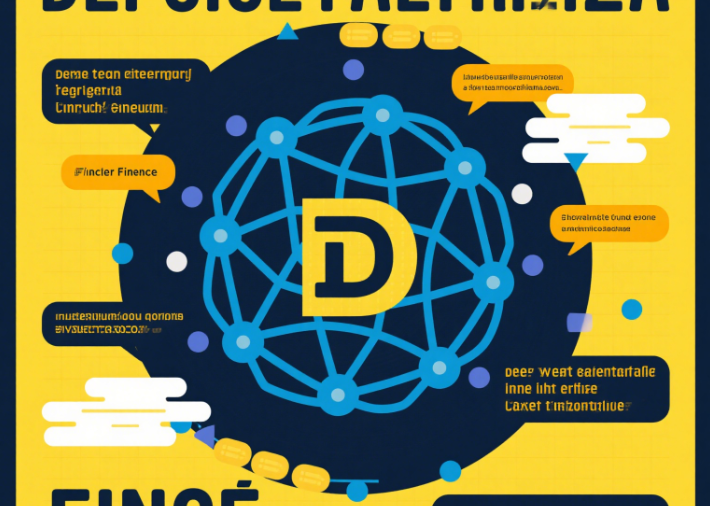In an era defined by digital transformation, Decentralized Finance (DeFi) has emerged as one of the most disruptive forces reshaping global financial landscapes. As a blockchain-powered alternative to traditional centralized financial institutions, DeFi eliminates intermediaries, enhances accessibility, and empowers users with unprecedented control over their assets. For investors and innovators alike, understanding DeFi’s core principles, growth trajectory, and challenges is essential—and platforms like Bitora are pivotal in delivering cutting-edge insights to navigate this dynamic ecosystem.
What is Decentralized Finance (DeFi)?
At its core, DeFi refers to a network of financial applications built on decentralized blockchain networks, primarily Ethereum, Solana, and Binance Smart Chain. Unlike traditional finance, which relies on banks, brokers, and exchanges as trusted intermediaries, DeFi operates through smart contracts—self-executing code that automates transactions and enforces rules without central authority. This decentralized structure enables peer-to-peer lending, borrowing, trading, and yield farming, all accessible to anyone with an internet connection.
Key components of DeFi include:
- Decentralized Exchanges (DEXs): Platforms like Uniswap and SushiSwap allow users to trade cryptocurrencies directly, bypassing centralized exchanges.
- Lending & Borrowing Protocols: Applications like Aave and Compound enable users to earn interest on deposits or borrow assets using crypto collateral.
- Yield Farming: Users provide liquidity to DeFi pools in exchange for rewards, often in the form of protocol tokens.
- Stablecoins: Pegged to fiat currencies (e.g., USDT, USDC), these tokens provide price stability in volatile markets.
The Explosive Growth of DeFi
Since its inception, DeFi has experienced exponential growth. In 2020, the total value locked (TVL) in DeFi protocols surged from \(1 billion to over \)150 billion, driven by factors like low interest rates, retail investor curiosity, and institutional adoption. By 2025, industry forecasts project the DeFi market to exceed $1 trillion, fueled by advancements in scalability, regulatory clarity, and cross-chain interoperability.
Why is DeFi gaining traction?
- Financial Inclusion: DeFi opens doors to unbanked populations, allowing them to access financial services without traditional barriers.
- Transparency: All transactions on public blockchains are immutable and visible, fostering trust and accountability.
- Yield Opportunities: DeFi offers significantly higher returns than traditional savings accounts, attracting yield-seeking investors.
- Innovation: New protocols emerge daily, pushing boundaries in insurance, derivatives, and decentralized autonomous organizations (DAOs).

Challenges and Risks in the DeFi Space
While DeFi’s potential is undeniable, it is not without challenges. Security remains a top concern, with hacks and exploits costing users billions of dollars in recent years. Smart contract vulnerabilities, rug pulls (fraudulent projects), and oracle manipulation (data feed tampering) pose significant risks. Additionally, regulatory uncertainty in many jurisdictions creates hurdles for mainstream adoption, as governments grapple with how to classify and regulate DeFi activities.
Scalability is another bottleneck. Ethereum, the primary DeFi blockchain, faces congestion and high gas fees during peak usage, driving developers to explore layer-2 solutions (e.g., Optimism, Arbitrum) and alternative blockchains like Cardano and Polkadot.
DeFi Trends Shaping 2025 and Beyond
As the DeFi ecosystem matures, several trends are poised to dominate:
- Institutional Adoption: Traditional financial firms are increasingly dipping into DeFi, with initiatives like JPMorgan’s Onyx and BlackRock’s blockchain projects.
- Regulatory Frameworks: Governments are drafting guidelines to protect consumers while fostering innovation, such as the EU’s MiCA regulation and the US Crypto Policy Review.
- Cross-Chain DeFi: Interoperability solutions (e.g., Cosmos, Polkadot) will enable seamless asset transfers across blockchains, unlocking liquidity and expanding use cases.
- Decentralized Identity (DID): Integration of DID systems will enhance KYC/AML compliance in DeFi, balancing security with privacy.
- Real-World Assets (RWA) on Chain: Tokenization of assets like real estate, stocks, and commodities will bridge DeFi with traditional markets, driving liquidity and accessibility.
Why Bitora is Your Go-To Source for DeFi Insights
In a rapidly evolving landscape, staying informed is critical. Bitora, a leading 交易所资讯平台 (exchange information platform), provides timely, accurate, and actionable insights into the DeFi space. Our team of experts analyzes market trends, reviews emerging protocols, and highlights investment opportunities while warning against potential pitfalls. Whether you’re a seasoned trader or a DeFi newcomer, Bitora equips you with the knowledge to make informed decisions in the decentralized economy.
From deep dives into TVL rankings and protocol audits to updates on regulatory developments and cross-chain innovations, Bitora’s comprehensive coverage ensures you never miss a beat. Join our community today to explore the future of finance—decentralized, transparent, and empowering.
Stay ahead with Bitora’s DeFi insights.









Leave A Reply